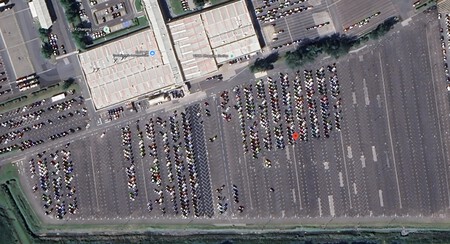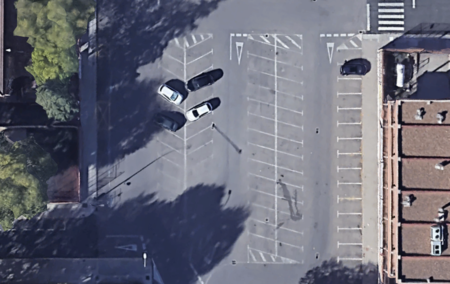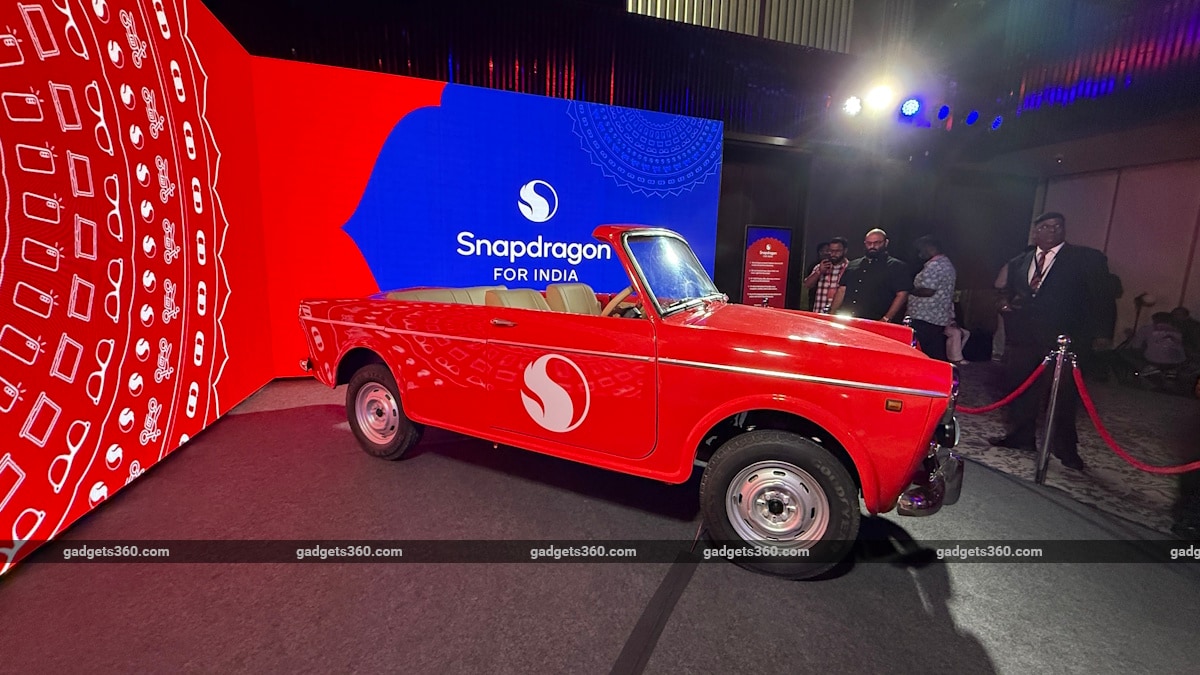We are all angry at a shopping center and see that there is a car that is occupying two places. And sometimes, it is not the problem of drivers, but of cars themselves. They are getting bigger, but parking squares do not change. But … Can’t you make larger places more efficiently? On a walk through Reddit, there are those who have found the solution: German parking lots with 60% more space.
It is not German efficiency, but the fish spine parking. The problem is that the miracle is relative.
Fish spine parking. Battery parking is battery parking (also vice versa). The perpendicular is the perpendicular. There is no doubt there, but with the fish spina parking there is a problem: too many names and interpretations. It can be called ‘fish spine’ as a translation of ‘fishbone parking’, but it is also known as’ Angled Parking, ‘Geometric Parking’ or ‘Herringbone parking’. And there are also variants.
The one in the image on these lines is the spine parking that they referred to in Reddit and it is easy to imagine the reason: it seems, indeed, the design of the fish thorns. In this parking lot, vehicles are placed at an angle of 30º, 45º or 60º with respect to the circulation lane, in rows of two cars that coincide by the nose.
Advantages. The maneuver when parking is very reduced, since you simply face the car at the right angle. That makes it much easier to occupy the exact point in the square, leaving a good distance with cars to the sides. We have less maneuvers than in a 90º parking and space is much more optimized than in parallel parking.
Another advantage is that it is safer. As is done in single -sense areas, we know where cars will come and, although we have to go back, low speeds in a parking should not be a security problem.
The calculations seem contradictory. There are studies that point out that this parking is the best way to optimize the space and that the 60º is the ideal. In 100 m², parking at 60º allows 5.2 seats. In 45, they are reduced to 4.9 places, in 30º it stays at 3.8 seats and in parallel the figure is 4.4 seats.
At first glance, it may seem that the data contradicts themselves. While some studies indicate that the angle of 60º allows more cars per area, others suggest that perpendicular parking offers a similar capacity. The key is how the lines and the total available spaces are distributed.


So? David Percy, a professor at the University of Salford, got down to work with mathematics and discovered that, if in a parking lot at 90º 500 cars entered, in a parking lot with lines drawn at 45º they fit 619. It represents an improvement of 23.8% that is far from the 60% that was stated in Reddit, but that it is evidently an advance and contrast with the previous fact that 60 same as 90º.
And the key is that it depends on the size of the enclosure. The great advantage when using a fish spine system would be noticed in very large enclosures. It is in those in which the number of places is optimized because it is necessary less space for the car to make maneuvers and, therefore, the traffic lanes can be narrower. In smaller parking lots, the space wasted at the edges of the first and last bays would counteract that intended savings.
Other studies in more content parking indicate that, with angle parking, 80 cars occupy 7% less than with the parking lot in 90º because this savings comes due to the lowest space necessary for maneuvers. It seems that the bigger the parking lot, the better it gets to opt for the fish spine parking.
Practical use. Therefore, “in Germany they use this pattern that saves 60% space”, is very relative and, as we see, it all depends on the space available in the parking lot. It is easier to enter because you have to maneuver much less, but in great parking lots the priority is not so much that you have it easier (there you have to look for life) but to enter the more, the more.
A very easy way to see where this type of parking is used is on Google Maps. And it is really not easy to find them. Where I have seen them is in car dealers and factories both in Germany and in other countries (in the United Kingdom, for example). Here we see that immense space that Percy spoke with the spike parking lot as the best solution, and it makes sense because what they need is to accumulate the more cars, the better.


There are also plants such as the Berlin or BMW Tesla gigafacto that have conventional parking.




And others such as the BMW of Obertraubling in which they do what they want:


But you don’t have to go to Germany to see a fish spine parking. This Parking of Ciudad Real is dwarf and it seems that when designed they asked “what parking model we applied.” And the answer was “yes.” We have in parallel, in 90º, in fish of fish and in another type of angle


In the end, the conclusion is that there are many possible types of parking (some that I neither knew) and that implement one or the other depends on something obvious: the space you have.
Imágenes | Google Maps, m
In WorldOfSoftware | Reserve a parking space with the body is possible. And also that they mulitate us for it












